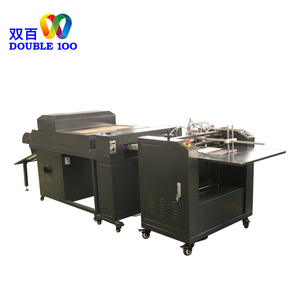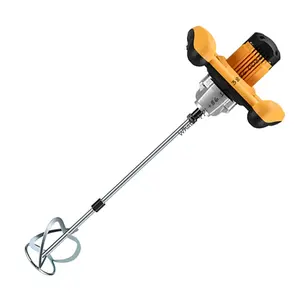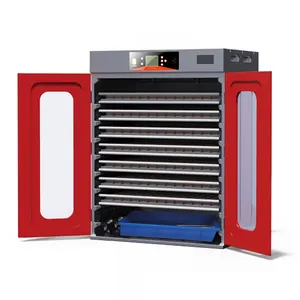Popular in your industry













































































Top categories
About print coating machine
Print coating machines are widely used in the printing industry to enhance the visual appeal and durability of printed materials. These machines apply a protective layer on the printed surface, safeguarding it against wear and tear. A spot UV machine is a specific type of UV coater that selectively applies ultraviolet (UV) coating to specific areas of a printed document, creating a glossy and eye-catching effect. A screen printing coater is designed for screen printing applications, where a mesh is used to transfer ink onto the substrate. In contrast, the spot UV coater uses a UV curing unit to dry and cure the UV coating, making it an essential component in the finishing process of various printing projects. A spot UV printing machine incorporates precision and control to apply UV coating only to specific areas, offering a cost-effective and efficient solution to achieve a premium finish. Let's delve into the details of print coating machines.
Types of print coating machines
Print coating machines come in various types to cater to different printing requirements. Roll-to-roll coating machines are ideal for continuous coating applications on roll substrates, offering high efficiency in large-scale printing projects. Sheetfed coating machines are designed to coat individual sheets of paper, making them suitable for smaller print runs and on-demand printing. Furthermore, spot UV coating machines can selectively apply UV coating to specific areas, providing a glossy and tactile finish. In comparison, flood coaters cover the entire surface of the printed material, providing overall protection and enhancement. Additionally, offline coating machines are standalone units that operate independently of the printing press, offering flexibility in the finishing process. In contrast, inline coating machines are integrated into the printing press, allowing for a seamless transition from printing to coating. Each type of print coating machine caters to specific printing needs, providing versatility and customization in the finishing process.
Applications of print coating machines
Print coating machines find extensive applications across various industries, enhancing the visual appeal and functionality of printed materials. In the packaging industry, these machines are used to apply coatings that provide protection against moisture, abrasion, and other environmental factors. Furthermore, print coating machines play a vital role in the production of marketing materials such as brochures, flyers, and business cards, where they are utilized to create a premium and attention-grabbing finish. In the publishing sector, these machines are employed to enhance the durability of book covers and add aesthetic value through coatings such as gloss or matte. The print coating machines are also utilized in the production of labels and stickers to ensure longevity and resistance to external elements. Moreover, in the textile and apparel industry, these machines are used to apply coatings for screen printing, offering vibrant colors and wear-resistant finishes. From packaging to publishing and marketing to textiles, print coating machines contribute to the overall quality and visual impact of printed materials across diverse industries.
Factors to consider when choosing a print coating machine
When selecting a print coating machine, several factors should be considered to ensure that the machine meets specific requirements and provides optimal performance. The type of coating desired, whether it is UV, aqueous, or specialty coatings, plays a crucial role in choosing the appropriate machine. The size and capacity of the machine, including the maximum coating width and speed, should align with the intended application and production volume. Additionally, considering the substrate compatibility and the ability to handle various materials, such as paper, cardboard, or films, is essential for a seamless coating process. The level of automation and control features, including programmable settings and user-friendly interfaces, contributes to operational efficiency and ease of use. Furthermore, evaluating the curing and drying capabilities, especially for UV coatings, is vital to ensure the timely and effective curing of the applied coatings. The versatility to accommodate different coating techniques, such as flood or spot coating, offers flexibility in meeting diverse finishing requirements. Lastly, considering factors like maintenance requirements, energy efficiency, and the reputation of the manufacturer can help in selecting a reliable and cost-effective print coating machine.






















